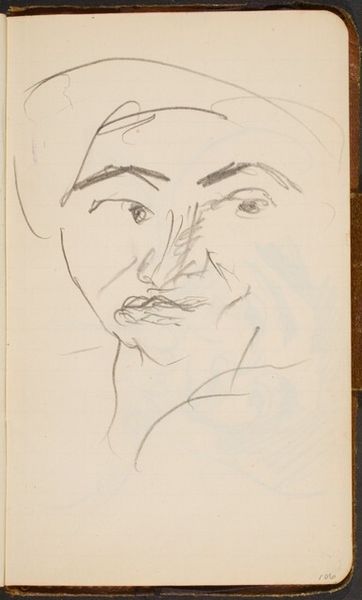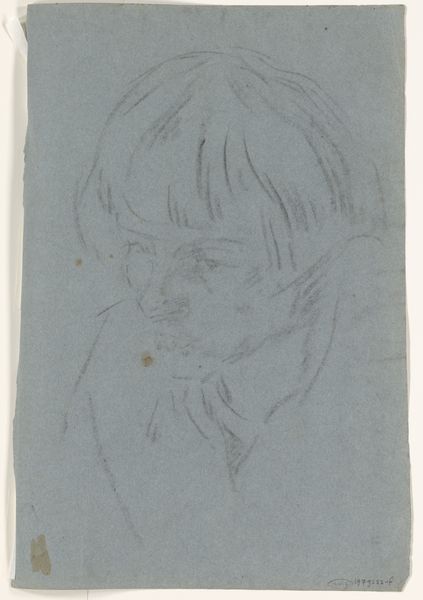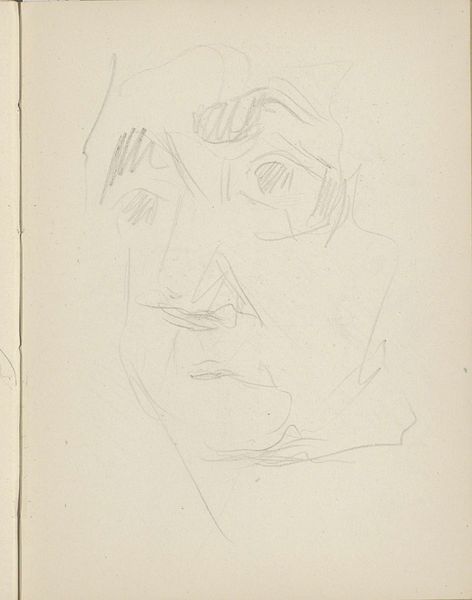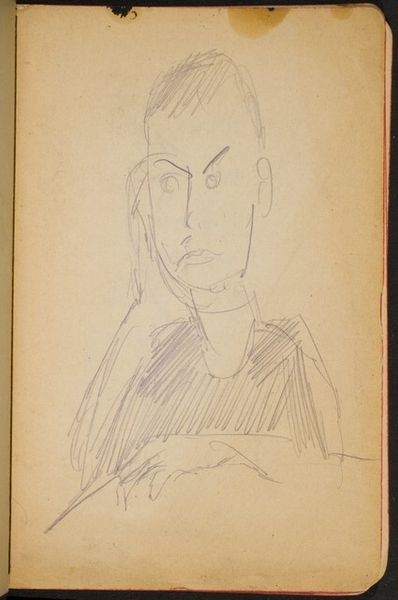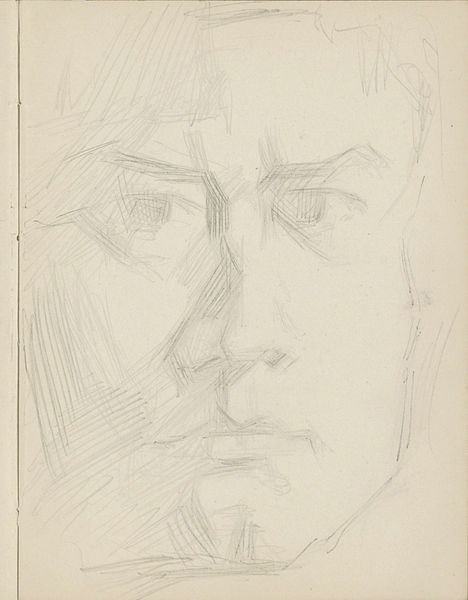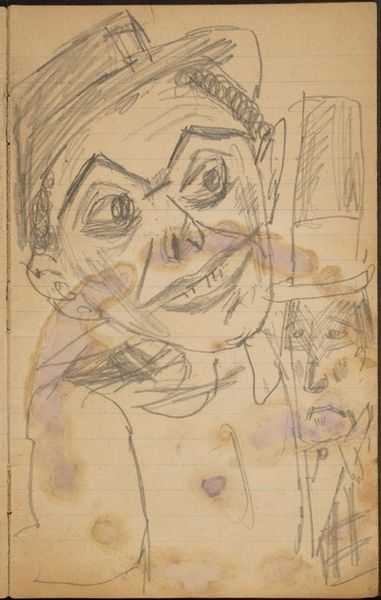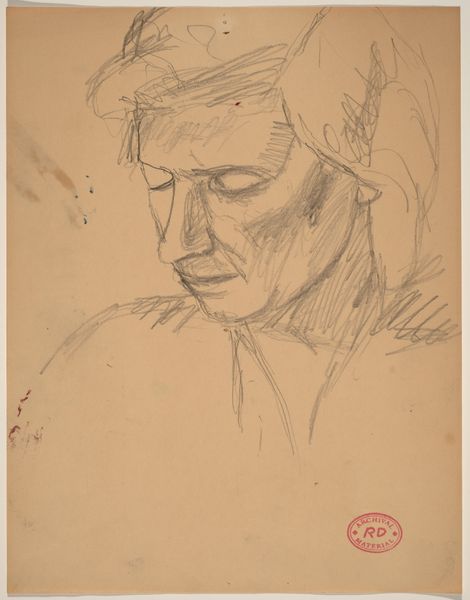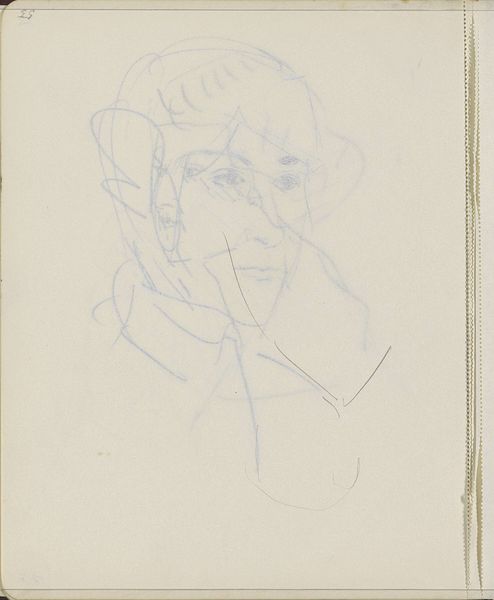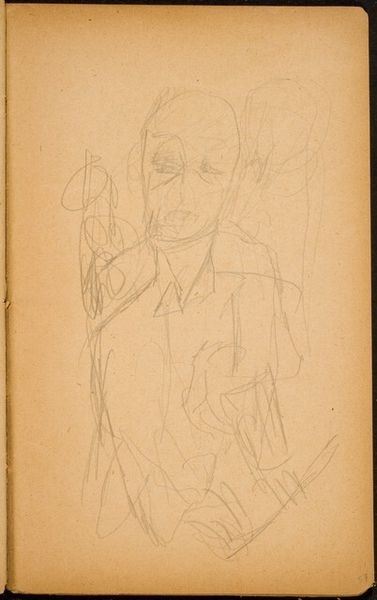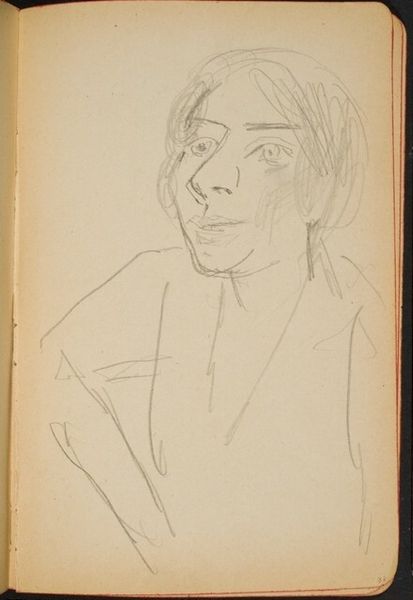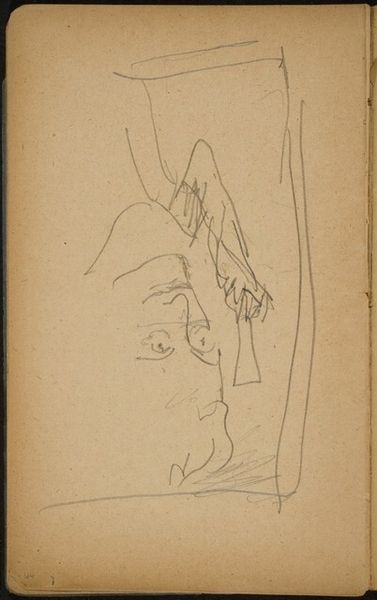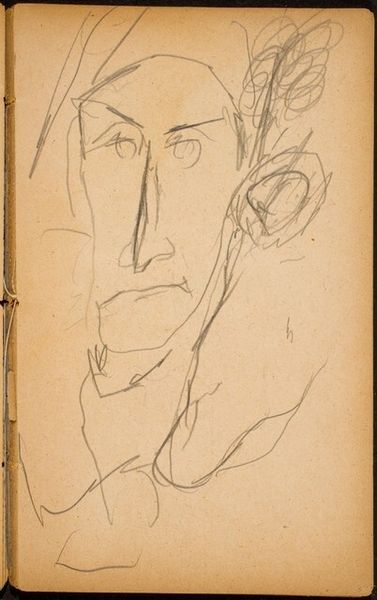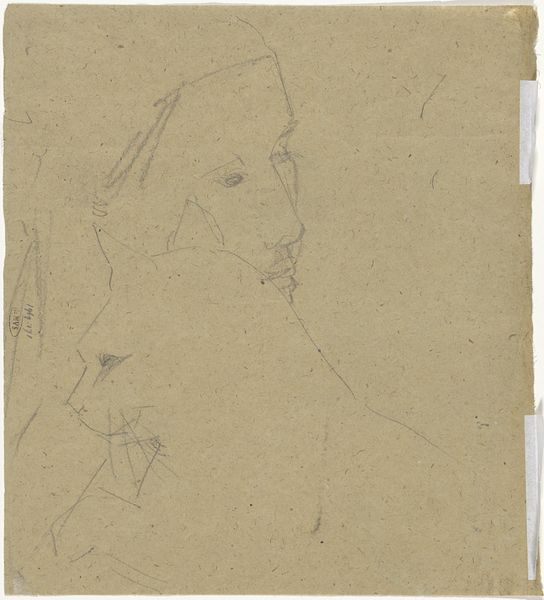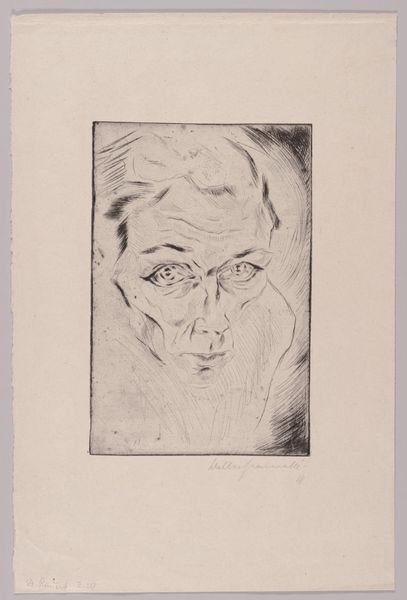
drawing, paper, graphite
#
portrait
#
drawing
#
paper
#
portrait reference
#
expressionism
#
graphite
Copyright: Public Domain
Editor: So, this is Max Beckmann's "Fridel Battenberg (mit der linken Hand gezeichnet)" from around 1917. It's a graphite drawing on paper, and it strikes me as very raw, almost like a fleeting thought captured on whatever was at hand. What do you make of its impact, especially considering the materials he chose? Curator: Precisely. This drawing compels us to consider the artist’s choice of materials and method. A quickly executed graphite drawing, notably "drawn with the left hand," suggests an immediacy and perhaps a constraint, impacting its production. What significance can we attribute to Beckmann's self-imposed restriction in the context of artistic labour during wartime? Editor: That’s a good point; choosing the non-dominant hand adds an interesting layer of complexity, right? Maybe even frustration? Curator: Exactly. Was this restriction an attempt to circumvent established modes of art production or a commentary on his own artistic capabilities amidst broader societal disruptions? Note too the support: lined paper, likely mass-produced, utilitarian. This removes the artwork from the preciousness often associated with "high art." How does that influence our perception of the sitter? Editor: So, the materials used imply a conscious effort to distance the work from traditional artistic values. What would it mean if he had produced this work on traditional, high-quality paper? Curator: That's it exactly. Had he used traditional materials, would it give off a completely different feeling, like that this work was intended to be 'precious', which does not seem the case? Also, how does Beckmann's method align with or challenge the prevalent notions of skill and craftsmanship inherent in Expressionism at the time? Editor: It gives a completely new view of portraiture, almost negating expressionistic trends of craftsmanship, in favor of utility, process and method. I learned to look at it in a completely new manner! Curator: Indeed. It pushes us to reconsider conventional interpretations of portraiture and value labor.
Comments
No comments
Be the first to comment and join the conversation on the ultimate creative platform.
